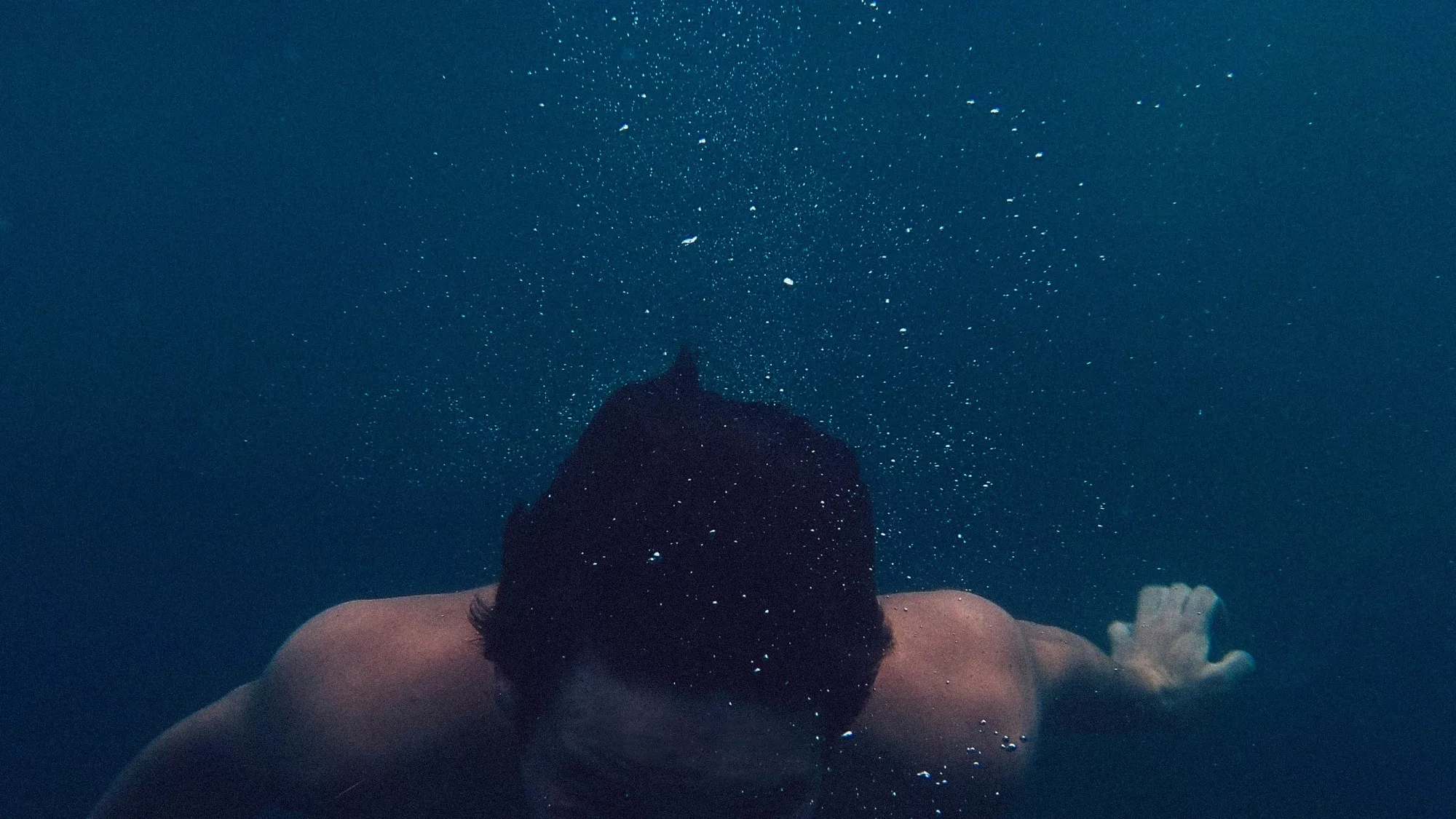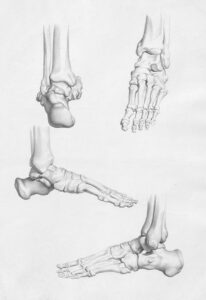Air is essential for human survival, providing the oxygen required for virtually every cellular process in our bodies. Without oxygen, critical systems begin to fail almost immediately, leading to irreversible damage and eventually death. The question of how long humans can survive without air isn’t straightforward, as it depends on various factors, including individual physiology, environmental conditions, and the circumstances surrounding oxygen deprivation.
In this article, we’ll dive into the science of oxygen deprivation, the effects on the body, and the mechanisms that determine how long a person can survive without air. We’ll explore survival scenarios ranging from drowning to high-altitude exposure and examine the incredible feats of free divers and other professionals who push the limits of human endurance.
The Role of Oxygen in the Humans Body
Oxygen is the cornerstone of life for most organisms, including humans. When we breathe in air, oxygen enters the lungs and diffuses into the bloodstream, where it binds to hemoglobin in red blood cells. This oxygen-rich blood is then transported to tissues and organs, providing the energy required for cellular functions.
At the cellular level, oxygen is used in the process of cellular respiration, which converts glucose and other nutrients into adenosine triphosphate (ATP), the molecule that powers biological processes. Without oxygen, the body is unable to produce enough ATP, leading to a cascade of failures in organ systems.
The Critical Window: The Rule of Threes
Survival experts often cite the “Rule of Threes” to describe human limits:
- You can survive three minutes without air.
- You can survive three days without water.
- You can survive three weeks without food.
While these are rough estimates, the three-minute rule for air deprivation is remarkably accurate for the average person. However, certain individuals, such as trained free divers, can significantly extend this time, while others, due to health conditions or environmental factors, may succumb much faster.
What Happens When You Stop Breathing?
The human body’s response to oxygen deprivation, or hypoxia, begins within seconds. Here’s a breakdown of what happens when you stop breathing:
1. 0-30 Seconds: Normal Oxygen Reserves
In the first few moments after you stop breathing, your body relies on the oxygen already present in your blood and tissues. The heart continues to pump oxygen-rich blood to vital organs, and most functions remain unaffected.
2. 30 Seconds – 2 Minutes: Hypoxia Begins
As oxygen reserves deplete, carbon dioxide levels in the blood start to rise, leading to a condition known as hypercapnia. This triggers an intense urge to breathe, accompanied by feelings of panic and discomfort.
3. 2-3 Minutes: Loss of Consciousness
Without fresh oxygen, the brain becomes deprived, leading to confusion, dizziness, and eventually unconsciousness. This is a protective mechanism, as it reduces the body’s oxygen demand.
4. 3-5 Minutes: Brain Damage Begins
After three minutes of oxygen deprivation, brain cells begin to die. Irreversible brain damage typically occurs after about five minutes, although this can vary based on individual circumstances.
5. 6-10 Minutes: Organ Failure and Death
Beyond six minutes, the lack of oxygen causes widespread cell death and organ failure. The heart stops pumping, and death becomes inevitable without immediate intervention.
Factors That Affect Survival Time Without Air
The amount of time a person can survive without air depends on several interconnected factors that determine how quickly the body depletes its oxygen reserves and how well it copes with oxygen deprivation. These factors range from individual health and fitness to environmental conditions and external circumstances. Understanding these variables provides insight into why survival times vary widely across different scenarios.
1. Physical Health and Fitness
A person’s overall physical health and fitness significantly influence how long they can survive without air. Healthy individuals with well-functioning cardiovascular and respiratory systems are generally better equipped to handle oxygen deprivation because their bodies can efficiently utilize available oxygen and maintain blood circulation. For example, a person with a strong heart and lungs will likely have a slower onset of hypoxia, the condition caused by insufficient oxygen reaching tissues.
On the other hand, individuals with pre-existing health conditions like asthma, chronic obstructive pulmonary disease (COPD), or heart disease face greater risks. These conditions impair the body’s ability to take in and distribute oxygen, leading to a faster progression of hypoxia. For instance, someone with asthma may struggle more quickly during suffocation or choking due to their compromised airways. Similarly, a person with anemia, which reduces oxygen-carrying capacity in the blood, will have a shorter survival time compared to someone with normal hemoglobin levels.
Good physical fitness can also help in scenarios where oxygen deprivation is expected, such as in high-altitude environments or underwater sports. People who engage in regular aerobic exercise often have stronger lungs, higher oxygen reserves, and improved blood circulation, giving them an advantage in oxygen-deprived situations.
2. Environmental Factors
Environmental conditions play a crucial role in determining how long a person can survive without air. High temperatures, for instance, can increase the body’s metabolic rate, causing it to use up oxygen more quickly. In such conditions, the demand for oxygen rises, shortening the time it takes for hypoxia to set in.
Humidity is another factor to consider. In humid conditions, the body struggles to cool itself effectively, leading to increased energy expenditure and faster oxygen consumption. Conversely, extremely dry environments can cause dehydration, which reduces blood volume and oxygen delivery to vital organs, further compounding the effects of oxygen deprivation.
Altitude is a critical environmental factor as well. At high altitudes, the atmospheric pressure decreases, reducing the amount of oxygen available in the air. People who are not acclimatized to these conditions may experience altitude sickness or hypoxia much faster. The body’s ability to adapt to high altitudes varies widely, but individuals unaccustomed to these environments often face significantly reduced survival times without supplemental oxygen.
In scenarios such as drowning, the type of water—cold versus warm—can influence survival. Cold water triggers the mammalian dive reflex, slowing the heart rate and conserving oxygen, which may extend survival time. Warm water lacks this effect, leading to faster oxygen depletion.
3. Activity Levels During Oxygen Deprivation
How active a person is during a period of oxygen deprivation has a direct impact on how quickly their body uses up its oxygen reserves. Physical exertion, such as struggling or panicking, increases the body’s metabolic rate and accelerates the demand for oxygen. This is especially critical in emergencies like drowning, choking, or suffocation, where fear and adrenaline often cause heightened activity.
In contrast, remaining calm and motionless can significantly extend the time before oxygen levels drop to critical levels. This is why free divers and other professionals who encounter oxygen deprivation regularly train to stay relaxed under pressure. By conserving energy and reducing physical movement, they slow their oxygen consumption and delay the onset of hypoxia.
Hyperventilation prior to oxygen deprivation, a technique often used by free divers, can also temporarily increase survival time. By reducing the initial levels of carbon dioxide in the blood, hyperventilation delays the urge to breathe, although it does not increase the amount of oxygen available in the body.
4. Age and Developmental Stage
Age is a major factor in determining how long someone can survive without air. Infants and young children are particularly vulnerable because they have smaller oxygen reserves relative to their body size and faster metabolic rates, which means they consume oxygen more quickly than adults. Their underdeveloped respiratory systems and limited ability to respond to stress further reduce their chances of surviving prolonged oxygen deprivation.
For elderly individuals, survival times may also be shortened due to age-related declines in lung capacity, weaker cardiovascular systems, and the presence of chronic conditions such as heart disease or diabetes. Reduced muscle strength in the diaphragm and other respiratory muscles can make it harder for older adults to recover from periods of oxygen deprivation, even with immediate intervention.
However, children and infants may have an advantage in specific scenarios, such as drowning in cold water. The mammalian dive reflex is often more pronounced in younger individuals, redirecting blood flow to vital organs and temporarily preserving oxygen. This reflex can sometimes lead to remarkable survival outcomes in situations that would be fatal for adults.
5. Adaptation and Training
Adaptation and training can drastically improve a person’s ability to survive without air, particularly for those who have practiced techniques to increase oxygen efficiency and tolerance to carbon dioxide. Free divers are perhaps the best example of how training can push the boundaries of human endurance. These individuals develop specialized skills such as static apnea, a technique that involves holding one’s breath while remaining completely still to conserve oxygen.
Over time, free divers condition their bodies to function with reduced oxygen levels by increasing lung capacity, improving oxygen storage in muscles, and tolerating higher levels of carbon dioxide. Some elite free divers can hold their breath for over 10 minutes, a feat unattainable for the average person without extensive training.
Similarly, individuals who live at high altitudes adapt over generations through physiological changes, such as increased production of red blood cells. This adaptation improves oxygen delivery to tissues, making them more resilient to oxygen deprivation. For example, populations in the Himalayas or Andes often have larger lung capacities and higher hemoglobin levels, enabling them to survive in environments where oxygen is scarce.
In addition, professional swimmers, military personnel, and astronauts undergo rigorous training to improve their ability to withstand oxygen-deprived conditions, demonstrating how preparation and experience can extend survival times beyond what is typically possible.
Scenarios of Oxygen Deprivation
1. Drowning
In drowning situations, the body is submerged in water, preventing access to air. Most people lose consciousness within two minutes, and death typically occurs within six minutes. However, cold water can trigger the mammalian dive reflex, slowing the heart rate and redirecting blood flow to vital organs, which may extend survival time.
2. Strangulation and Suffocation
Strangulation blocks airflow to the lungs, while suffocation involves the depletion of oxygen in the surrounding environment. In both cases, the timeline for survival follows the standard three-minute rule, with brain damage occurring after five minutes and death soon after.
3. High-Altitude Hypoxia
At high altitudes, reduced atmospheric pressure lowers the amount of oxygen available in the air. Symptoms of acute mountain sickness can develop within hours, while prolonged exposure can lead to life-threatening conditions such as high-altitude pulmonary edema (HAPE) or high-altitude cerebral edema (HACE).
4. Choking
Choking occurs when an object obstructs the airway, preventing airflow. Survival depends on how quickly the obstruction is removed. Immediate intervention, such as the Heimlich maneuver, can save lives, but delays beyond three minutes often result in unconsciousness and death.
Exceptional Cases: The Limits of Human Endurance
Free Divers
Free divers, who dive to extreme depths without breathing apparatus, are among the most remarkable examples of human adaptation to oxygen deprivation. Through breath-holding techniques such as static apnea, some free divers can hold their breath for over 10 minutes.
This extraordinary ability is achieved through rigorous training that improves lung capacity, reduces oxygen consumption, and increases tolerance to high levels of carbon dioxide. While impressive, these feats are only possible under controlled conditions and cannot be generalized to untrained individuals.
Cold Water Drowning Survivors
In rare cases, individuals have survived prolonged periods of drowning in extremely cold water. The mammalian dive reflex, triggered by submersion in cold water, slows the heart rate and redirects blood flow to vital organs, preserving oxygen and delaying brain damage.
Some people have been revived after more than 30 minutes underwater, although such cases are exceptional and heavily dependent on factors like water temperature and immediate medical intervention.
The Science of Resuscitation
In many cases, death from oxygen deprivation is not instantaneous, and prompt medical intervention can reverse its effects. Techniques such as cardiopulmonary resuscitation (CPR) and the use of automated external defibrillators (AEDs) can restart the heart and restore oxygen flow to the brain.
Advanced medical treatments, including hyperbaric oxygen therapy, can also mitigate the effects of oxygen deprivation by rapidly increasing oxygen levels in the blood. These interventions are most effective when administered within the critical window of three to six minutes after oxygen deprivation begins.
Preventing Oxygen Deprivation
Understanding the risks and mechanisms of oxygen deprivation is crucial for prevention. Here are some key measures:
- Learn CPR and First Aid: Basic life-saving skills can make a critical difference in emergencies.
- Avoid Risky Behaviors: Use safety equipment, such as life jackets and harnesses, to prevent drowning or suffocation.
- Monitor Health: Manage conditions like asthma and cardiovascular disease that can increase vulnerability to oxygen deprivation.
Conclusion
Humans can survive without air for only a few minutes under normal conditions. While exceptional cases exist, such as free divers and cold-water drowning survivors, the timeline for oxygen deprivation is remarkably consistent, with irreversible brain damage occurring after five minutes and death soon after.
Understanding the science of oxygen deprivation highlights the importance of prevention, prompt intervention, and continued research into improving survival outcomes. Air is life, and its absence reminds us of the delicate balance required for human survival. By equipping ourselves with knowledge and skills, we can better protect ourselves and others in critical situations.




